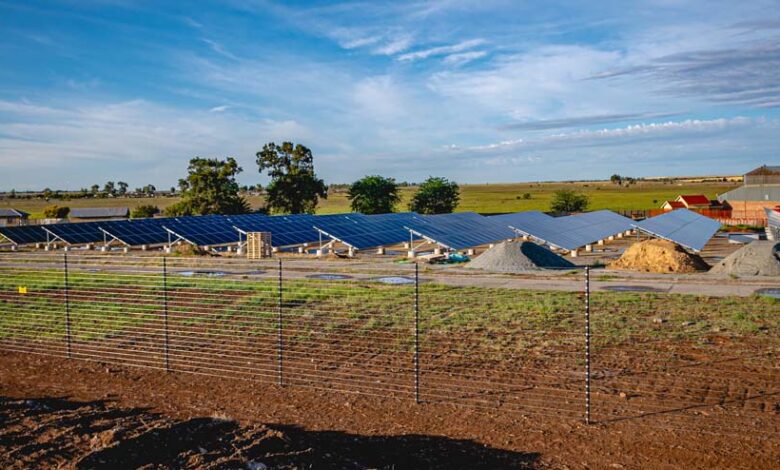Vesconite Bearings Invests In A Comprehensive Solar Energy Solution At Its Free State Factory

Vesconite Bearings Invests In A Comprehensive Solar Energy Solution At Its Free State Factory. Vesconite Bearings is taking strides towards sustainability and environmental responsibility by implementing a comprehensive solar energy solution at its Free State-based factory in South Africa.
The initiative, spearheaded by Factory Manager Robin Crabb and CEO Dr Jean-Patrick Leger, involves a significant investment in solar infrastructure to reduce the factory’s reliance on the power grid and make substantial progress in becoming more environmentally friendly.
As of mid-November, Phase I of the project is 80% complete, with the installation of steelwork on concrete slabs to support 325 kVA of solar panels. The panels are being loaded at present, marking a crucial milestone in the transition to solar energy. Simultaneously, Phase II is underway, encompassing the installation of an additional sub-station, the installation and commissioning of two generators, inverters with a capacity of 700 kVA, and a 500 kVA uninterrupted power supply (UPS) system.
According to Crabb, “Making the sub-station live is a significant step forward, with approximately 25% of Phase II already completed”. The completion of Phases I and II is targeted for the end of 2023, contingent on timely equipment deliveries from suppliers. Phase III, scheduled to commence in late December, aims to double the solar capacity by an additional 325 kVA. Challenges in steel supply may influence the timeline, but Vesconite Bearings remains committed to its sustainability goals.
Additionally, consideration is being given to purchasing a 1 MW battery system, enabling the storage of solar energy for peak consumption times during the night. This investment aligns with Vesconite Bearings’ vision for its ‘lights-out’ facility, intended to operate 24/7 for large-volume order production, circumventing challenges posed by load-shedding from South African electricity provider Eskom.
To enhance security, the company is also installing a 1.8 m electric fence around the solar system. Leger expressed optimism about the project’s potential impact, stating, “We aim to reduce dependence on traditional energy sources, cut costs, and significantly decrease our carbon footprint”. Vesconite Bearings is confident that these solar investments will fortify the company’s resilience against energy challenges and contribute to a greener, more sustainable future for South Africa and beyond.




